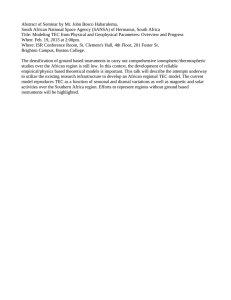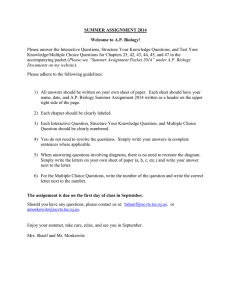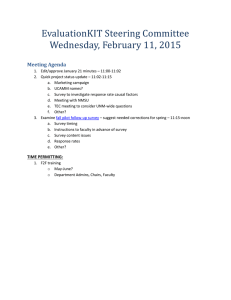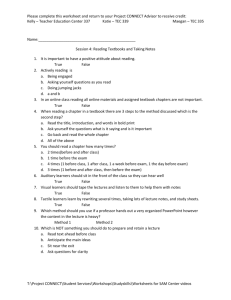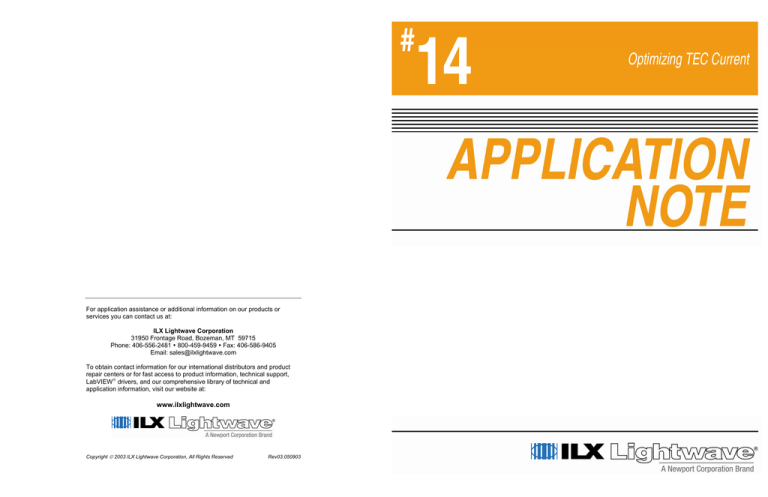
#
14
For application assistance or additional information on our products or
services you can contact us at:
ILX Lightwave Corporation
31950 Frontage Road, Bozeman, MT 59715
Phone: 406-556-2481 800-459-9459 Fax: 406-586-9405
Email: sales@ilxlightwave.com
To obtain contact information for our international distributors and product
repair centers or for fast access to product information, technical support,
LabVIEW drivers, and our comprehensive library of technical and
application information, visit our website at:
www.ilxlightwave.com
Copyright 2003 ILX Lightwave Corporation, All Rights Reserved
Rev03.050903
Optimizing TEC Current
Optimizing TEC Drive Current
This Application Note discusses methods for
optimizing the TEC drive current for optimum
operation in heating and cooling applications.
The number and configuration of couples
determines the electrical and heat pump properties of the TEC module.
BACKGROUND
TECs are frequently used to keep lasers at a
constant temperature during continuous operation, and are also used to swing the laser
chip temperature over a wide range for parametric test. In other applications, the requirement is to reach a certain temperature in the
shortest possible amount of time.
Thermoelectric coolers (TECs) are widely
used for controlling the temperature of a variety of laser packages and chip sizes by pumping away thermal energy (heat) that would
otherwise cause the chip temperature to rise
uncontrollably. TECs rely on the Peltier Effect,
whereby driving current through P- and N-type
semiconductor materials will cause them to
transfer heat. Figure 1 illustrates the concept.
In addition to cooling temperature-sensitive
loads, TEC modules are frequently used as
heaters. Their ability to both heat and cool a
load makes them ideal for life-test and burn-in
test racks, where the majority of the test is run
at an elevated temperature. When the temperature of the load must be reduced, perhaps
for in-situ L/I/V testing, the TEC current is
reversed and the load quickly cooled. Large
TECs are also used at parametric test stations
where the device is tested at a number of
different temperatures. In order to reduce test
Notice that the P and N materials pump heat in
opposite directions when the current flow is in
the same direction. To get the two materials to
pump heat in the same direction, one of the
materials must be reverse biased relative to
the other. This is very simply accomplished by
connecting the adjacent ends in series, and
real TEC modules are constructed by connecting strings of these P-N “couples” in series.
–
I
+
Heat
Released
P
Heat
Absorbed
–
I
+
Heat
Absorbed
N
Heat
Released
Heat
Released
P
N
I
+
Heat
Released
–
Heat
Absorbed
1
Heat
Absorbed
4) Appropriate drive current. If the TEC
controller is not capable of driving the TEC
with enough current, the optimum heat pump
capacity won’t be achieved and the load temperature will be difficult to control to the
desired set point. In cooling applications too
much TEC control current will cause the TEC
module to operate inefficiently and, if the heat
sink is marginal, may lead to thermal runaway.
cycle time, it is critical that the TEC is able
to swing the device temperature as rapidly as
possible.
Perhaps the most important point to consider
when using TECs is that they are heat pumps.
In other words, they pump heat from the laser,
which generates heat, to the heat sink, which
dissipates heat. In order to achieve this heat
pump action, current must be driven to the
TEC in the proper direction.
These points can be addressed using the
TEC selection tools available on some of the
more comprehensive websites posted by TEC
manufacturers. A list of websites is included
at the end of this Application Note.
Regardless of the application, the TEC configuration must meet certain requirements to
work correctly:
1) Properly sized TEC. If the TEC is too
small for the application it will not have adequate heat pump capacity, and no matter how
the TEC is driven the load temperature will be
difficult or impossible to control. If a TEC is
used in a heating application and is too small,
the temperature ramp time may be unacceptably long.
This Application Note primarily addresses
point #4, drive current requirements. Optimizing the drive current is an often overlooked
aspect of TEC applications, and can lead to
disappointing TEC performance even when
all the other application parameters have
been carefully optimized.
2) Adequate heat sinking. Failure to install
a properly sized heat sink can cause many different problems. The heat sink must be sized
to dissipate the heat pumped away from the
load and it must also dissipate the heat generated by the TEC module. In cooling applications, an inadequate heat sink will cause a
“thermal runaway” once the heat sink temperature starts to rise uncontrollably.
Figure 2 shows the experimental configuration used to understand how TECs operate at
different drive currents. The experiment used
an LDC-3926559 TEC module with 6 A maximum current, to drive a 15 mm x 30 mm,
35-couple TEC module. The thermal load was
a power resistor, driven to dissipate approximately 2.65 W. A high-volume ducted fan was
used to remove heat from the large aluminum
heat sink. A computer was connected to the
LDC-3926 High Power Laser Diode Controller
mainframe to collect data.
3) Proper TEC selection. TEC modules are
available in a wide variety of sizes, couple
configurations, and drive current ranges. The
TEC must be chosen according to the application requirements, physical size limitations,
controller capabilities, and required temperature range.
Another high-power temperature controller,
such as the ILX LDT-5980, could also be
used for this experiment.
2
-0.8°C. Reducing the TEC input power by
nearly 32% actually increased the cooling
capability of the TEC.
Power
Supply
Load
Fan
This somewhat surprising result can be
explained by examining the heat sink temperature plot and understanding another fundamental of TEC module operation: TECs
pump heat most efficiently when the load
and heat sink sides of the module are at the
same temperature. As the temperature differential increases the heat pump capability
decreases.
TEC
Controller
Figure 2 Experiment Setup
EXPERIMENT #1
OPTIMUM TEC OPERATING
CURRENT FOR COOLING
Temperature vs. Time
Cooling
The first experiment was designed to demonstrate the minimum achievable load temperature under a variety of TEC drive currents.
Figure 3 and Table 1 show the results from
running the TEC at a constant current of 4 A,
5 A, and 6 A.
35
30
Temperature (°C)
25
Perhaps the most surprising conclusion from
this test is that the load does not reach the
lowest temperature with the highest TEC drive
current. At 6 A TEC current (27.9 W input
power) the load was cooled to just below 0°C.
At 5 A TEC current (19.1 W), the load reached
Heat Sink Temperature
20
Load T - 6A
HS T - 6A
Load T - 5A
HS T - 5A
Load T - 4A
HS T - 4A
15
10
5
Load Temperature
0
-5
0
2
4
6
8
10
12
14
16
18
Time (min)
Figure 3 Graphical Summary Results
Table 1
Tabular Results
Drive
Current
Load Temp
(Steady State)
Max H.S.
Temp (°C)
TEC Input
Power (W)
Ambient
Temp. (°C)
Heat Sink
RTherm (°C/W)
6A
5A
4A
-0.1°C
-0.8°C
0.2°C
30.3
28.7
26.8
27.9
19.1
12.1
23.7
23.7
23.7
0.21
0.23
0.21
3
20
EXPERIMENT #2
The conclusion from this experiment is that
driving the TEC module at maximum rated
current does not necessarily give the best
heat pump capability. In fact, by reducing the
TEC input power to less than half of the maximum rated power nearly the same load temperature can be achieved. The most positive
benefit of this operating characteristic if that
the TEC is over-sized, and then operated at
less than maximum current, far less waste
heat is generated in the thermal system.
OPTIMUM TEC DRIVE
CURRENT FOR HEATING
Reversing the current flow through the heat
sink causes the heat pump to work in reverse
so that heat is pumped to the load instead
of away from it. Figure 5 shows the results
of three different test runs with fixed drive current levels. Since the TEC also pumps its own
heat to the hot side, the fastest heating results
are achieved at the highest input power.
Another example showing that the optimum
drive current is substantially lower than the
TEC maximum operating current, uses ILX’s
LDM-4984 Telecom Laser Diode Mount with
the case temperature control option installed.
Figure 4 shows the results of an experiment
where a 0.5 W load was mounted on the hot
plate and the TEC driven at various currents.
For this particular configuration, the lowest
temperature was reached at 2.5 A and the
worst performance was at 4.0 A. The maximum current specification of the TEC used in
the mount is 6.0 A.
The TEC controller was operated at a constant current for this experiment. If the controller is operated in temperature-control mode,
the drive current will be gradually reduced as
the temperature nears the set point, and the
ramp time will be somewhat extended.
Even when operated in “heat mode” the TEC
is a heat pump, which means that it must
pull heat from some source to pump it to
the load. In this case, the heat sink was adequately sized, and acted as a heat reservoir.
Temperature Ramp Time vs. Drive Current
TE550 Laser Diode Mount
30
Temperature vs. Time
Heating
2.0A
2.5A
3.0A
3.5A
4.0A
25
100
90
80
Temperature (°C)
Temp (°C)
20
15
4.0A
10
3.5A
5
70
60
50
6A Heat
5A Heat
4A Heat
40
2.5A
30
0
0
5
10
15
20
20
Time (minutes)
0
20
40
60
80
100
Time (seconds)
Figure 5. Heat Mode Tamp Times
Figure 4. LDM-4984 with Case Temperature Control
Option
4
120
While the load was heating the heat sink temperature dropped slightly, but no more than
0.5°C.
CONCLUSION
The experiments described in this Application
Note demonstrate the following two points:
• If the TEC is appropriately sized and has
adequate heat sinking, the TEC module is
most efficiently operated in cooling mode with
substantially less input power than the rated
maximum.
• When TECs are used in heating applications, operation at maximum input power is
desirable for the fastest ramp time.
A temperature controller with independent
heating and cooling current limits gives the
flexibility to take advantage of this peculiar
operating characteristic.
In order for the TEC module and temperature
controller to function as intended, the remaining components of the system must be optimized, of course. The size of the heat sink, the
power delivered by the TEC power supply, and
the electrical and heat transfer capabilities of
the TEC module must all be considered.
Visit these TEC manufacturer websites
for more information on TEC module
selection:
www.ferrotec-america.com
www.melcor.com
www.marlow.com
5
The following publications are available for download on at www.ilxlightwave.com.
White Papers
• Typical Output Drift of a LDX-3412 Loc-Cost Precision Current
Source
• Typical Output Noise of a LDX-3412 Precision Current Source
• A Standard for Measuring Transient Suppression of Laser Diode
Drivers
• Degree of Polarization vs. Poincaré Sphere Coverage
• Improving Splice Loss Measurement Repeatability
• Typical Output Stability of the LDC-3724B
• Typical Output Stability of a LDX-3100 Board-Level Current Source
• Typical Pulse Overshoot of the LDP-3840/03 Precision Pulse
Current Source
• Typical Temperature Stability of a LDT-5412 Low-Cost Temperature
Controller
• Using Three-Wire RTDs with the LDT-5900 Series Temperature
Controllers
• Voltage Drop Across High Current Laser Interconnect Cable
• Voltage Drop Across High Current TEC Interconnect Cable
• Voltage Limit Protection of an LDC-3916 Laser Diode Controller
• Wavelength Accuracy of the 79800 DFB Source Module
Technical Notes
• Attenuation Accuracy in the 7900 Fiber Optic Test System
• Automatic Wavelength Compensation of Photodiode Power
Measurements Using the OMM-6810B Optical Multimeter
• Bandwidth of OMM-6810B Optical Multimeter Analog Output
• Broadband Noise Measurements for Laser Diode Current Sources
• Clamping Limit of a LDX-3525 Precision Current Source
• Control Capability of the LDC-3916371 Fine Temperature Resolution
Module
• Current Draw of the LDC-3926 16-Channel High Power Laser Diode
Controller
• Determining the Polarization Dependent Response of the FPM-8210
Power Meter
• Four-Wire TEC Voltage Measurement with the LDT-5900 Series
Temperature Controllers
• Guide to Selecting a Bias-T Laser Diode Mount
• High Power Linearity of the OMM-6810B and OMH-6780/6790/
6795B Detector Heads
• Large-Signal Frequency Response of the 3916338 Current Source
Module
• Laser Wavelength Measuring Using a Colored Glass Filter
• Long-Term Output Drift of a LDX-3620 Ultra Low-Noise Laser Diode
Current Source
• Long-Term Output Stability of a LDX-3525 Precision Current Source
• Long-Term Stability of an MPS-8033/55 ASE Source
• LRS-9424 Heat Sink Temperature Stability When Chamber Door
Opens
• Measurement of 4-Wire Voltage Sense on an LDC-3916 Laser
Diode Controller
• Measuring the Power and Wavelength of Pulsed Sources Using the
OMM-6810B Optical Mutlimeter
• Measuring the Sensitivity of the OMH-6709B Optical Measurement
Head
• Measuring the Wavelength of Noisy Sources Using the OMM-6810B
Optical Multimeter
• Output Current Accuracy of a LDX-3525 Precision Current Source
• Pin Assignment for CC-305 and CC-505 Cables
• Power and Wavelength Stability of the 79800 DFB Source Module
• Power and Wavelength Stability of the MPS-8000 Series Fiber Optic
Sources
• Repeatability of Wavelength and Power Measurements Using the
OMM-6810B Optical Multimeter
• Stability of the OMM-6810B Optical Multimeter and OMH-6727B
InGaAs Power/Wavehead
• Switching Transient of the 79800D Optical Source Shutter
• Temperature Controlled Mini-DIL Mount
• Temperature Stability Using the LDT-5948
• Thermal Performance of an LDM-4616 Laser Diode Mount
• Triboelectric Effects in High Precision Temperature Measurements
• Tuning the LDP-3840 for Optimum Pulse Response
• Typical Long-Term Temperature Stability of a LDT-5412 Low-Cost
TEC
• Typical Long-Term Temperature Stability of a LDT-5525 TEC
Application Notes
• App Note 1: Controlling Temperatures of Diode Lasers and
Detectors Thermoelectrically
• App Note 2: Selecting and Using Thermistors for Temperature
Control
• App Note 3: Protecting Your Laser Diode
• App Note 4: Thermistor Calibration and the Steinhart-Hart Equation
• App Note 5: An Overview of Laser Diode Characteristics
• App Note 6: Choosing the Right Laser Diode Mount for Your
Application
• App Note 8: Mode Hopping in Semiconductor Lasers
• App Note 10: Optimize Testing for Threshold Calculation
Repeatability
• App Note 11: Pulsing a Laser Diode
• App Note 12: The Differences between Threshold Current
Calculation Methods
• App Note 13: Testing Bond Quality by Measuring Thermal
Resistance of Laser Diodes
• App Note 14: Optimizing TEC Drive Current
• App Note 17: AD590 and LM335 Sensor Calibration
• App Note 18: Basic Test Methods for Passive Fiber Optic
Components
• App Note 20: PID Control Loops in Thermoelectric Temperature
Controllers
• App Note 21: High Performance Temperature Control in Laser Diode
Test Applications
6
#
14
For application assistance or additional information on our products or
services you can contact us at:
ILX Lightwave Corporation
31950 Frontage Road, Bozeman, MT 59715
Phone: 406-556-2481 800-459-9459 Fax: 406-586-9405
Email: sales@ilxlightwave.com
To obtain contact information for our international distributors and product
repair centers or for fast access to product information, technical support,
LabVIEW drivers, and our comprehensive library of technical and
application information, visit our website at:
www.ilxlightwave.com
Copyright 2003 ILX Lightwave Corporation, All Rights Reserved
Rev03.050903
Optimizing TEC Current



